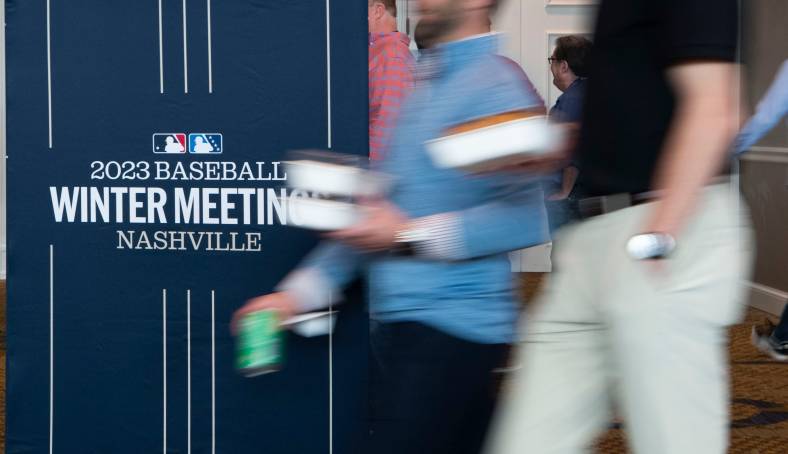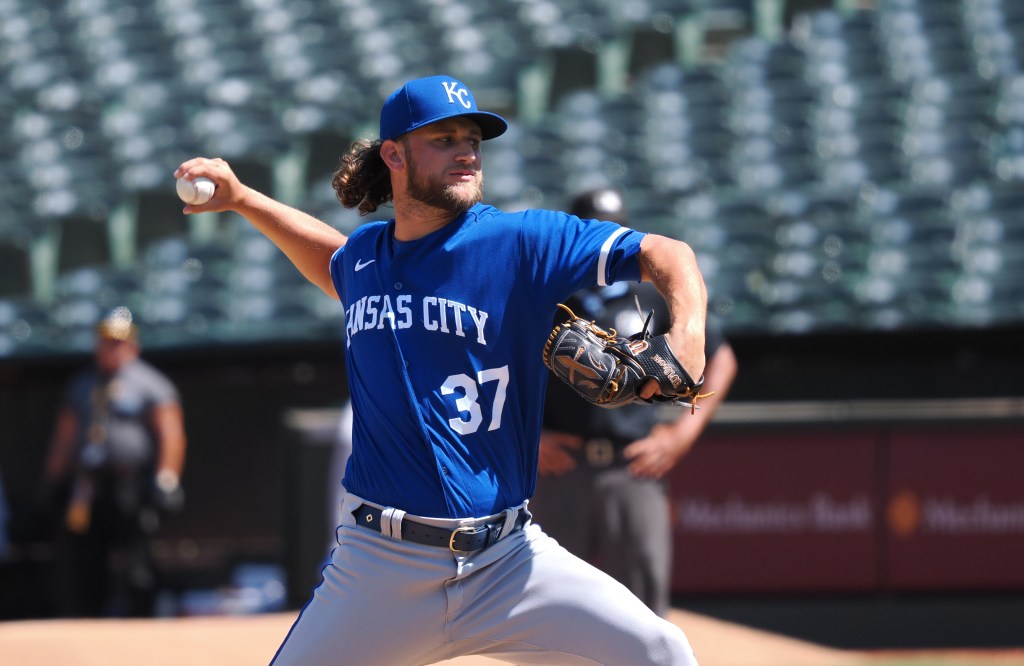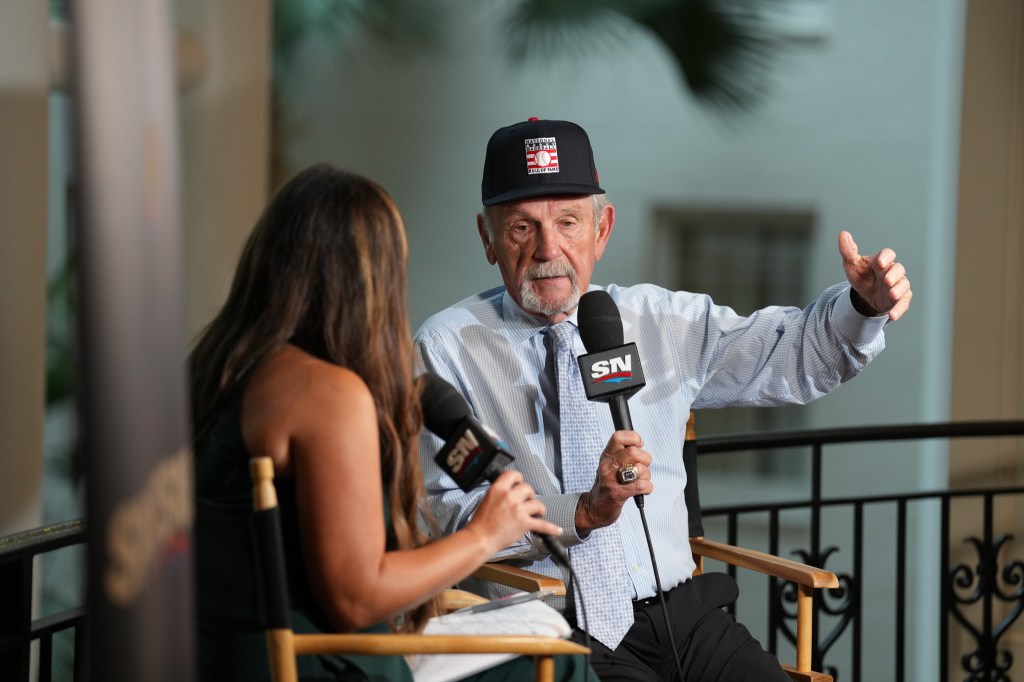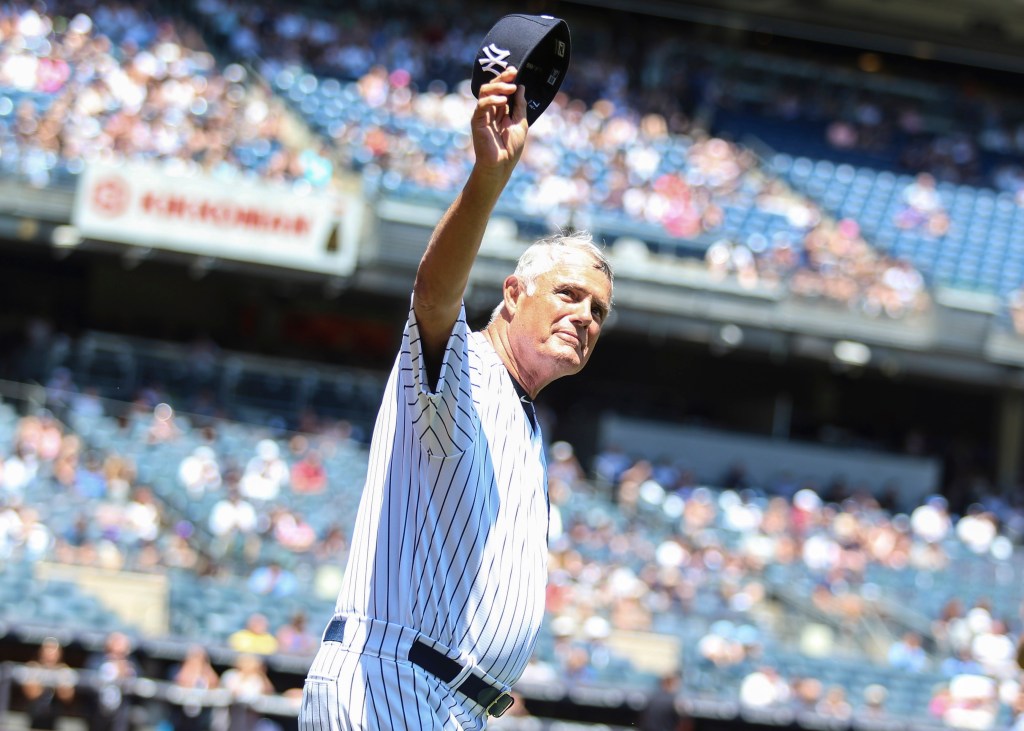
The first day of baseball’s winter meetings has passed, and it wasn’t exactly an eventful one.
Plenty of reports about teams being interested in specific players, but few actual pieces of news.
That’s fairly typical for the first day of the meetings. Things genuinely heat up by Day 2 and there’s often a flurry on the final day, which is Wednesday this year.
I still expect this to be an active offseason for many teams because the trade block seems to be filled with interesting names. But trades are more difficult to consummate than signings, and so they usually take a little longer.
Additionally, the dance for two-way superstar Shohei Ohtani could be slowing the free agent market. Once that domino falls, that action will step up, too.
So be patient. If history serves, there will be bigger moves made on Tuesday and Wednesday.
The most notable transaction Monday was not surprising, though it is difficult to read. The Milwaukee Brewers reportedly re-signed lefty Wade Miley to a one-year, $7 million deal with a 2025 mutual option for $12 million that includes a $1.5 million buyout.
Miley, 37, was 9-4 with a 3.14 ERA in 23 starts in 2023 and, with the Brewers non-tendering Brandon Woodruff, re-signing a veteran who has had success with the organization makes sense.
The Brewers may be the most intriguing club this offseason. They won the National League Central by nine games last year, but they are reportedly considering trading ace Corbin Burnes and shortstop Willy Adames, both pending free agents after 2024.
So, is the Miley signing an indication that the Brewers are going to remain competitive in 2024 or is it simply stabilizing a rotation spot with Burnes potentially on the move? Maybe it’s a contingency for both – while the Brewers continue to decide on which path to proceed.
The Seattle Mariners trade – for pitching?

One consensus heading into the baseball winter meetings is that the Seattle Mariners are looking for offensive help, specifically in the corner outfield or on the right side of the infield. Maybe that comes via a free agent signing, or potentially, they deal from their surplus of rotation arms.
The Mariners are, after all, run by “Trader” Jerry Dipoto, the franchise’s president of baseball operations. Therefore, it’s not a shock that on Sunday evening the first trade of the winter meetings – or on the eve of them, anyway – involved the Mariners.
The surprise is that the Mariners traded away an outfielder for more pitching.
The deal itself seems lopsided: Seattle dealt former top outfield prospect Jarred Kelenic, 24, as well as lefty starter Marco Gonzales and first baseman Evan White to the Atlanta Braves for right-hander Jackson Kowar and pitching prospect Cole Phillips.
It was basically a salary dump, with Atlanta absorbing the bulk of Gonzales’ and White’s contracts while taking a chance on Kelenic, the sixth pick in the 2018 draft who compiled a .746 OPS in 105 games with the Mariners last year.
Maybe it signals that Seattle, after finally making the playoffs in 2022, is heading back to the baseball desert after missing the postseason in 2023.
Instead, I’d keep an eye on the Mariners this week and this month. They need to make a move to propel themselves back into the conversation with the Houston Astros and Texas Rangers, their division rivals who have won the last two World Series.
Dumping salaries on Sunday – and in the Eugenio Suárez trade with the Arizona Diamondbacks in November – should set the Mariners up for a run at a big-money target this winter. I still think they could be a dark horse candidate for Ohtani’s services, at least until it’s proven otherwise. They have the pitching depth to swing a Juan Soto deal with the San Diego Padres if so inclined.
Maybe they are simply stepping back and shedding finances. But I’m not buying that yet.
Jim Leyland’s Hall-of-Fame honor deserving

I was thrilled to hear that Jim Leyland, who managed 22 seasons and led the Florida Marlins to the 1997 World Series title, has been selected to the National Baseball Hall of Fame by the Contemporary Baseball Era Non-Players Committee on Sunday.
Leyland needed 12 of 16 votes for induction and received 15 from the committee, which is made up of Hall-of-Fame players, former baseball executives, historians and media members.
National Baseball Hall of Fame by the Contemporary Baseball Era Non-Players Committee voting
- Jim Leyland: 15 votes (93.8%)
- Lou Piniella: 11 votes (68.8%)
- Bill White: 10 votes (62.5%)
Leyland is among the greatest managers of his era. No doubt. He is also one of the game’s greatest characters. I was once in a media scrum in the Camden Yards visiting dugout when he ranked the best and worst parks for secretly smoking a cigarette in the dugout tunnel while still having a view of the game. He had put some real thought into it.
In October 2006, I had the pleasure of following his Detroit Tigers throughout their playoff run, which ended in a World Series loss to the St. Louis Cardinals. It was fascinating to hear his daily musings on that team, which had lost 91 games the year before with Alan Trammell managing. Not once did Leyland take credit for the incredible turnaround, but it was obvious he was a huge reason the Tigers made a 24-win jump in 2006. That offseason he won the last of his three Manager of the Year Awards.
Every day during that playoff run, Leyland shared his thoughts on the game and his individual decisions with the media. It was a great learning experience for a young baseball reporter.
Too many unfortunate Hall of Fame snubs

This year’s Contemporary Baseball Committee had a brutal task. The group had eight candidates to consider – and all were worthy of induction, especially the four managers on the list: Leyland, Lou Piniella, Davey Johnson and Cito Gaston. They’d likely all have my vote.
The problem is each committee member only gets three votes to use. And that makes the task damn near impossible given the quality of candidates. I like that there must be a 75 percent agreement for induction – the way there is with the regular ballot. But the BBWAA electorate gets up to 10 votes for its players’ decisions. It’d be nice for the committee members to have, say, five at their disposal.
Still, if the committee could name just one recipient for 2024, Leyland is the guy I would have endorsed. I think the committee got it right. My three probably would have been Leyland, former Orioles and Indians GM Hank Peters and former National League president Bill White, who was also a player and broadcaster. But that omits Piniella and Johnson, who certainly should be in. What a tough call for the committee.
A Hank Peters story
Hank Peters is best known in Baltimore Orioles lore for swinging one of the greatest trades in franchise history, a 10-player deal with the New York Yankees in 1976 that yielded the Orioles three essential pieces for their later World Series runs: starter Scott McGregor, reliever Tippy Martinez and catcher Rick Dempsey.
A longstanding rumor has it that Peters could have done even better; that he had a choice of two young swingmen from the Yankees in the deal: right-hander Dave Pagan or lefty Ron Guidry. Since the Orioles were acquiring three lefty pitchers already in the deal, McGregor, Martinez and Rudy May, Peters went with Pagan, the righty. Pagan lasted half a season with the Orioles, before being claimed by the Mariners in the expansion draft. Meanwhile, Guidry won 170 games for the Yankees and captured the 1978 AL Cy Young Award.
I once asked Peters if that rumor was true, and he said, ‘No.’ Or not really, anyway. Peters, who died in 2015 at age 90, told me that many names were included in trade discussions with the Yankees that season, including Guidry and Orioles All-Star infielder Bobby Grich, who was a pending free agent. Peters said he liked Guidry’s upside, coveted him and wasn’t concerned about acquiring another lefty.
It’s just that Guidry didn’t fit into the final parameters for what Peters was willing to give up. He said he never chose Pagan specifically over Guidry, that it was never an either-or ultimatum. And he joked that he thought he did pretty well, regardless, with that trade decision.
Imagining Guidry on the Orioles instead of the Yankees, however, could have completely changed the power structure in the AL East in the late 1970s and early 1980s.
The Yankees appeared in four World Series from 1976 to 1983, winning two and losing two. In the same period, the Orioles made two World Series, winning one and losing one.
Dan Connolly is an MLB Insider for Sportsnaut. Follow him on Twitter.